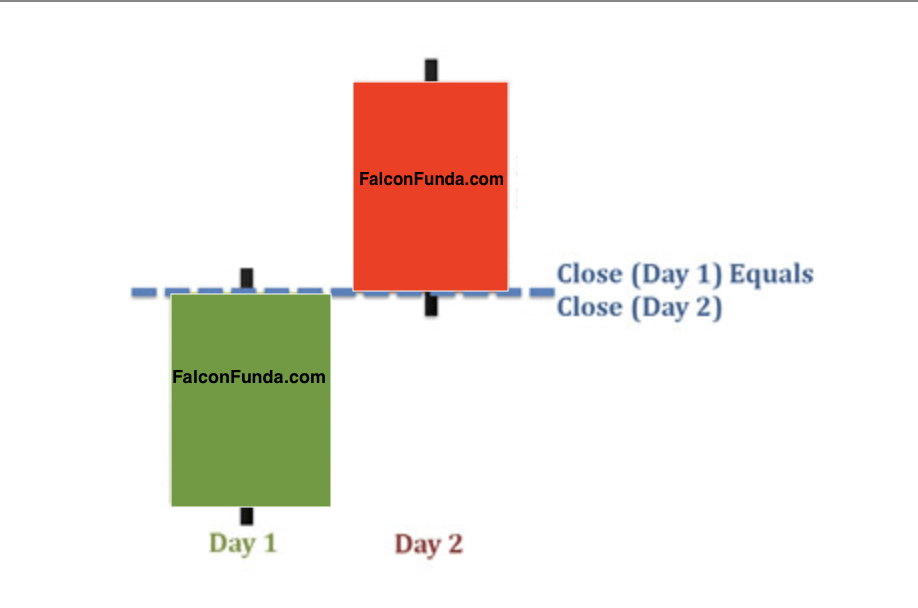Introduction
Bullish Counterattack Lines is a two-day trend reversal pattern with one bullish candlestick and a bearish candlestick.

What is Bullish Counterattack Candlestick pattern?
A bullish counterattack line or bullish meeting line occurs during a downtrend.
The first day is a bearish candlestick.
The second day is a large bullish candlestick. It opens far below the close of the first day’s bearish candlestick but then rallies back, closing at roughly the same price as the first day’s candlestick closing price.
Why is Bullish Counterattack Candlestick pattern important ?
The psychology of the Bullish counterattack line pattern is that a significant gap down on the second day gives bears confidence that the downward trend will continue. but instead of heading further down, prices reverse and fill the gap, and close at the same price level as the previous day’s close. The bulls gained ground on the day.


What is Bearish Counterattack Candlestick pattern?

A bearish counterattack line or bearish meeting line occurs during an uptrend.
The first day is a bullish candlestick.
The second day is a large bearish candlestick. It opens far above the close of the first day’s bullish candlestick but then retreats, closing at roughly the same price as the first day’s candlestick closing price



Why is Bearish Counterattack Candlestick pattern important ?
The psychology of the Bearish counterattack line pattern is that a significant gap UP on the second day gives bulls confidence that the uptrend trend will continue. Still, instead of heading further up, prices reverse down and fill the gap, and close at the same price level as the previous day’s close. The bears gained ground on the day. This price action signals a potential bearish reversal confirmed on the third or fourth candle on your TradingView Chart
Next Read: 10 Key Questions in your Trading Plan
